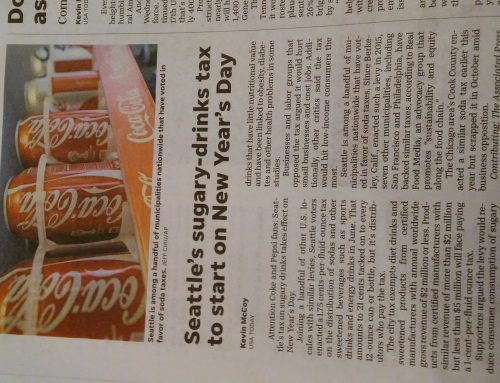Michael J. Keegan, Managing Editor
The Business of Management Magazine
IBM Center for the Business of Government
1301 K Street NW
Washington, D.C. 20005
Dear Mr. Keegan:
I was very interested in your interview with Mr. Robert Doar of the New York City Human Resources Administration (HRA) in your Spring 2010 edition, thanks, since I know a good deal about the program from years of working with customers of HRA (who are mostly poor mothers and their kids). I’d like to share some insight into HRA’s service delivery and also some numbers that show substantial room for improvement in HRA’s business model.
Mr. Doar states that he has savings targets, and is attempting to find “ways to save 10 to 5 percent without hurting service delivery.” Yet HRA wastes substantial amounts of money on programs that do not provide any adequate assistance to the families I work with.
HRA’s “Back to Work” Program, for example, just one of its programs created under the ideology of work first, spent $53,000,000 in fiscal year 2008. The goal of Back to Work was presumably to find and retain employment for 58,246 recipients of welfare assistance (TANF) in New York City. At the end of the fiscal year 2008, the Back to Work program identified and placed 5,337 recipients in jobs, or 9 percent of the goal, for at least 180 days.
This means that HRA spent close to $10,000 per client to find and place them in a job that may have only lasted 180 days. In terms of efficiency and business success, this particular performance falls short. Any business that reaches only 9 percent of its own goal would logically seek to aggressively improve its efficiency and savings; or it would go out of business. Yet Back to Work was refunded and carried out in the same fashion in 2009, despite these results. Change seems slow to come to HRA and all the TANF programs in my professional experience.
The IBO stated in one analysis of New York City’s welfare to work programs, all administered by HRA:
What has the evidence shown on these issues? Costs, of course, depend on the nature of the program and on the support services provided. Most of the transitional jobs programs reviewed in a recent Mathematica report cost $1,000 to $2,000 per participant per month, with administrative and support costs often exceeding those of wages (my emphasis). In contrast, mandatory work experience or “workfare” programs have zero wage costs (by definition), but administrative costs that have run anywhere from $1,000 to $8,000 per participant on an annual basis.
If the goals are to 1) “help welfare recipients to become self sufficient” and 2) cutting costs/saving money, it is apparent that having HRA customers work for no or low wages will not accomplish either of these. It is also clear that these administrative costs will not help HRA save money. Programs like Back to Work then require additional funding to be spent to get child care for the participants, since they cannot afford it out of pocket. As a consequence of Doar’s work first model, large portions of TANF block grant funding, originally intended for use as income support to reduce poverty, instead has to be used to fund subsidized child care. Brookings Institution analyst Harry Holtzer estimates the cost of this child care is $5,000 per child (1997) and annually “is likely to run into the hundreds of millions of dollars.” If we conservatively assume that 75% of the Back to Work participants will need round child care, that’s another $26 million dollars annually on top of the $53 million to put those 5,337 mothers “Back to Work.”
Add to this that those participants are not given training that will significantly improve their ability to earn income, and the whole model is put into question. Then add that Back to Work is just one of dozens of HRA programs that are designed and administered in much the same fashion.
As taxpayers, we are essentially the shareholders of HRA programs. Any shareholder in a company that spends $79 million a year to employ 5,337 people for only 6 months has a right to ask questions about whether this performance reflects a sound business strategy into the future. Mr. Doar can “really believe in work requirements for people receiving public assistance” but his strong belief that it is the right strategy is not making it so. The expense of the work programs, for such little return for my clients, cannot be ignored. And I haven’t even touched on the social, emotional and economic costs of the failed programs to the participants and their kids (but can do so at a later time if you are interested).
Looking forward to your thoughts on this.





Leave A Comment